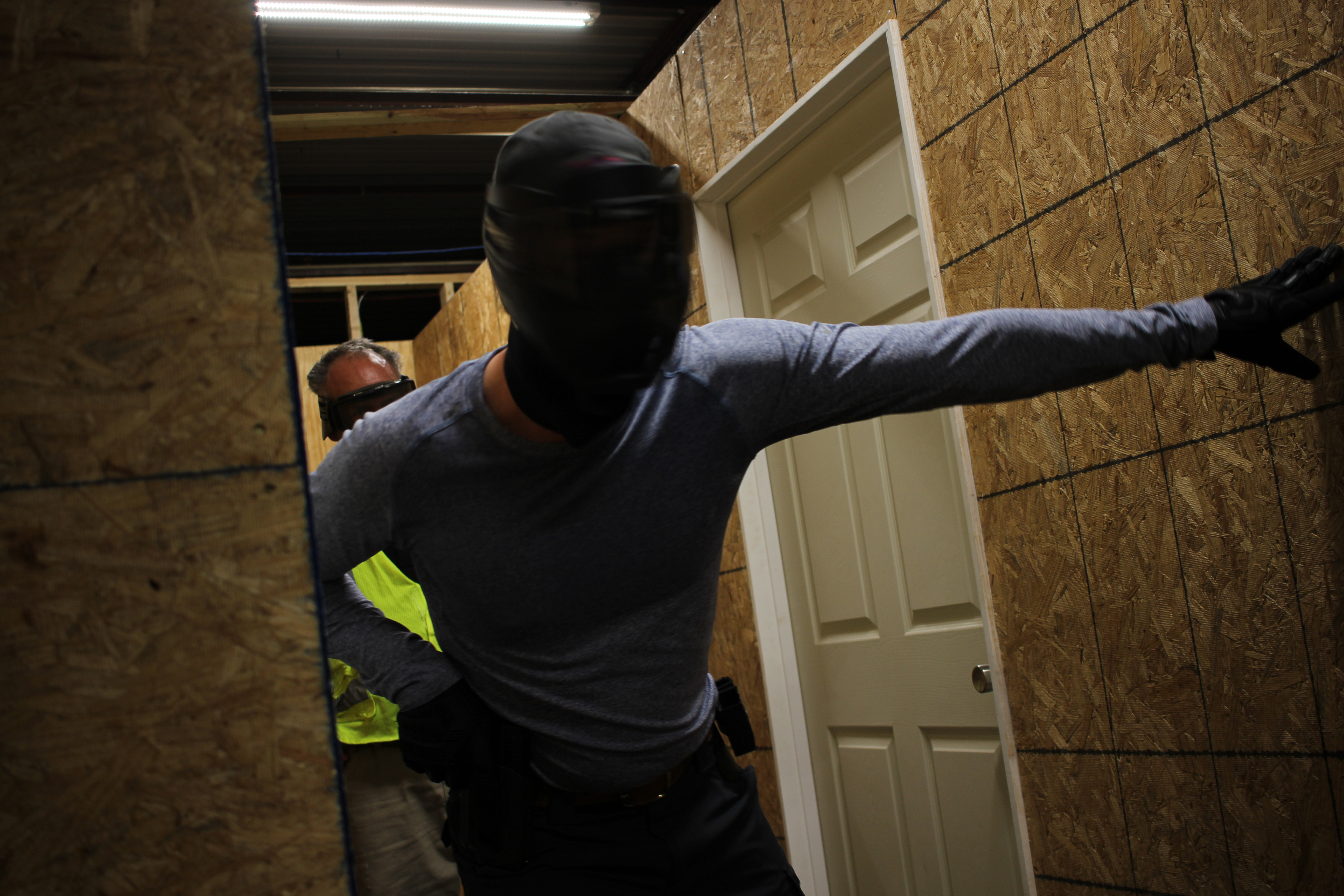How Much Training Should A Gun Owner Have?
TRAINING OFFERINGS AND INFORMATION
We train individuals and teams to SWAT level competencies. Our curriculum includes combative firearms, individual and team tactics, and tactical medicine and communications skills.
We train individuals and teams to actively defend life and property from a violent threat. Active defense is the ability to stop a violent threat, minimizing casualties and damage, and secure the scene prior to the arrival of law enforcement.
How we deliver our training.
Our training is delivered via online, on-range, and on-site offerings. You can purchase a single online course, subscribe to a monthly online training program, attend one of our on-range courses or engage one of our on-site turnkey packages.
We use various combinations of videos, photos, narratives, scripts, formats, briefings, exercises, and scenarios to develop the skills, techniques, tactics and strategies necessary to competently defend life and property.
Our training programs are guided via Smartsheet interactive spreadsheets that marshal our training assets into a plan that will deliver the training objective. These are the programs we offer:
DSI's Six Programs
- Prospective Gun Owner Program
- Combative Handgun Program
- Individual Tactics Program
- Combative Rifle Program
- Team Tactics Program
- Command School Program
Our training programs and resources will:
- Help you decide whether or not you should buy a gun and if so what to buy.
- Teach you basic gun safety and effectiveness.
- Develop basic weapon skills for combative handgun, shotgun and rifle.
- Train you on individual tactics so you can eliminate lethal threats.
- Train you to work as a team to defend enterprise, church or school.
- Teach you the command skills necessary to defend your immediate community.
How Much Training Should A Gun Owner Have?
Anybody who purchases a gun for self-defense at some point might find themselves actually having to shoot somebody. Theoretically, any basic firearms training should teach you how to use a weapon to defend yourself in a lethal confrontation. Since your life and the life of innocent bystanders are at stake - you should get competent training.
Most first-time gun buyers spend less on their firearms training than they do for a month's worth of yoga classes.
After all, people spend thousands of dollars and hundreds of hours annually to pursue their hobbies and athletic pursuits. So you would think that a potentially deadly pursuit like purchasing a weapon for self-defense would cause them to prioritize their time and budget to learn how to safely and effectively use a weapon. Right?
Wrong.
Most first-time gun buyers spend less on their firearms training than they do for a month's worth of yoga classes. Or a new golf putter. And worse yet, once they have completed training they don't practice what they learned (going to the range and shooting 100 rounds from a stall at a stationary target is not practicing).
Understand that if you are engaged in a lethal force confrontation you will be in the fight of your life. Your body will react in ways that you never could have imagined. In a few short seconds you will be called upon to make life and death decisions while physically manipulating a lethal weapon. The ability to do this safely and effectively will be dependent upon the skills you learn and practice.
Yet most Americans think that a $75, four-hour concealed carry course taught by a local community college instructor using state-mandated PowerPoint slides that mostly focus on legalities and cleaning and storing their weapon is enough training. It isn't. This is like buying a cheap pair of Nike trainers and expecting to run a sub three-hour marathon without actually training. Or watching a YouTube golf lesson and expecting to shoot par on your first round of golf.

Just like any other human endeavor that requires you to learn a new skill, effectively utilizing this skill demands that you train. That you practice this skill. And nowhere is this more applicable than firearms training. When we started DSI back in 2009 it was with the intention of offering the training necessary to develop safe and effective defenders of life and property.
Over the ensuing 10 years, we have developed a tactical training curriculum second to none and consisting of thousands of pages written over tens of thousands of hours by a team of military vets, security contractors, federal agents, state police, special forces operators, and SWAT team members. We deliver our curriculum via qualified and certified Combative Firearms Instructors, who use on-line, on-range, and on-site courses, programs, structured post-course training routine, and hundreds of supporting resources to ensure you get the training you need. We use an integrated format that threads together pre-course, on-range, and post-course persistent training phases in order to develop safe and effective defenders.
Ron Danielowski, chief instructor and co-founder narrates a tour of our on-line resources used to support new students:
The most important phase is your post-course training, the persistent practicing of skills and techniques learned during the on-range phase. We cannot emphasize enough the need to practice, in a programmed manner, under the watch of an experienced instructor, the skills and techniques learned on-course. Nowhere does the old adage "use it or lose it" apply more than tactical training.
We have developed guidelines reflecting our belief that sustained training and correct practice are necessary for anyone to be a safe and effective defender of life and property. At every level of training, we insist upon - and provide the resources for - this level of commitment and persistent effort:
- CONCEALED CARRIER - 18 hours initial training + 74 hours of persistent practice annually. For the casual concealed carrier who carries periodically in public venues like restaurants, shopping, commuting, etc.
- INDIVIDUAL DEFENDER - 48 hours initial training + 103 hours of persistent practice annually.For the serious citizens who want to learn how to safely and effectively defend life and property from lethal threats
- TEAM DEFENDER - 72 hours initial range training + 133 hours of persistent practice annually. For serious citizens who want to learn how to work as a team to defend their business, church, and school.
The table below contains a more detailed breakout of training phases and the activities involved during each phase. These guidelines are developed with our curriculum in mind but can be adapted by other training groups or instructors.
Visit our Master Training Calendar and Registration page for details on signing up for a course. The calendar below shows the courses that have been scheduled to date:







